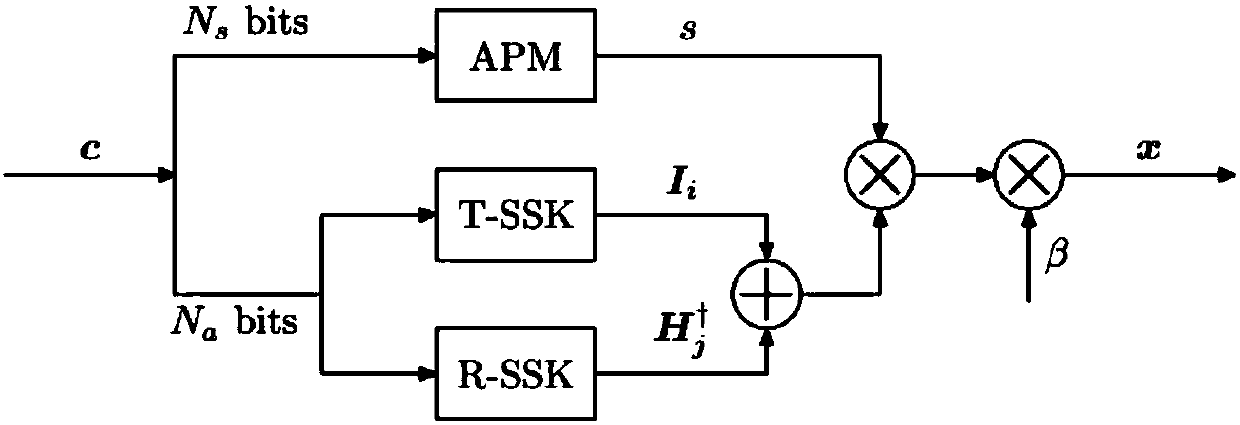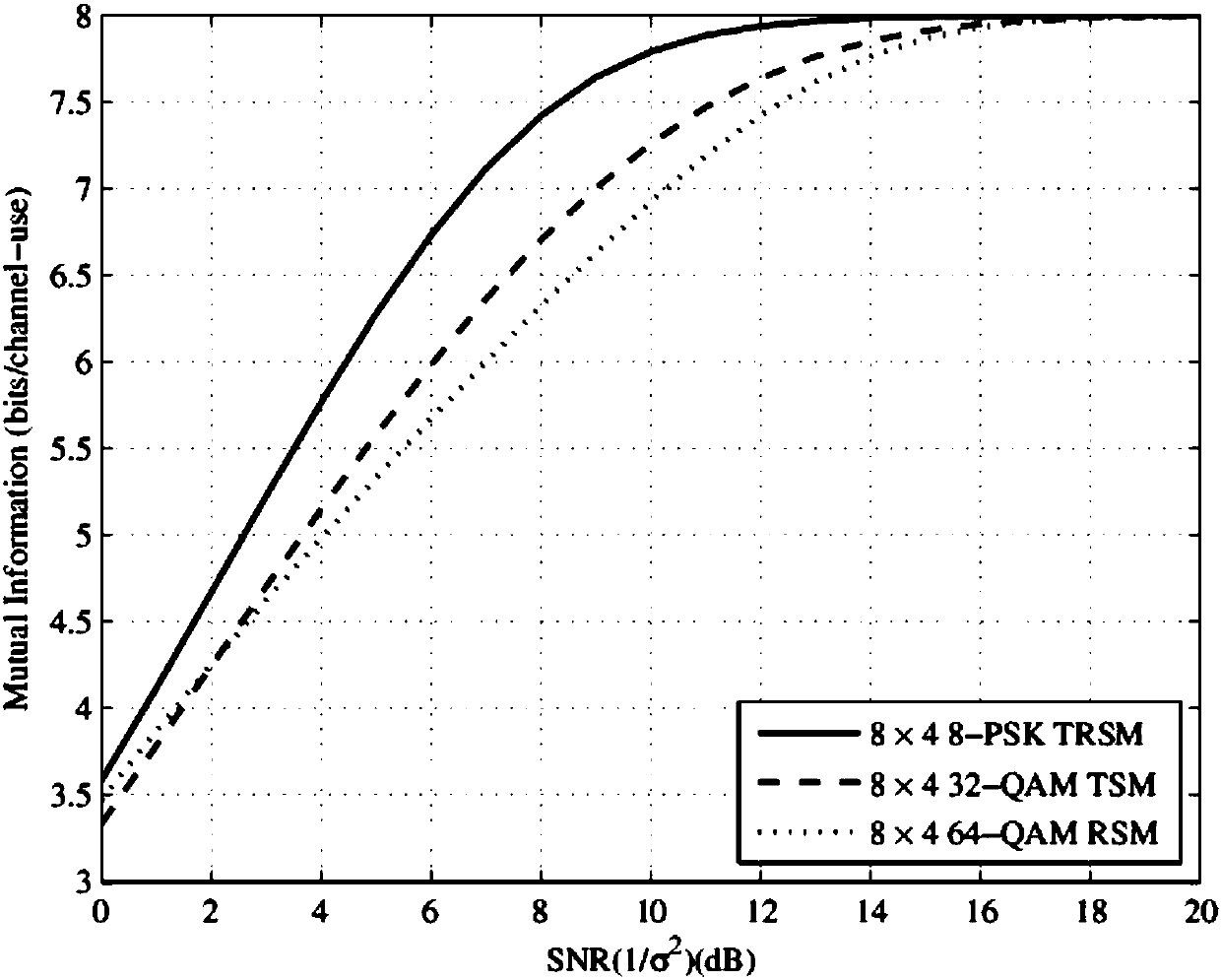Spatial modulation method based on selection of receiving and transmitting antennas
A technology of spatial modulation and transmitting and receiving antennas, which is applied in space transmit diversity, diversity/multi-antenna systems, radio transmission systems, etc., and can solve problems such as low spectrum efficiency
- Summary
- Abstract
- Description
- Claims
- Application Information
AI Technical Summary
Problems solved by technology
Method used
Image
Examples
Embodiment 1
[0018] The number of transmitting antennas configured in this embodiment is M T =8, the number of receiving antennas is M R =4. i(1≤i≤M T ) root transmitting antenna transmits to the jth (1≤j≤M R ) The channel coefficient corresponding to the receiving antenna is h j,i , the wireless channel matrix for transmission Each element of is determined by the channel coefficient h j,i composed and known at both the sender and receiver. The received signal vector is That is y=Hx+z, where represents the sending vector, Is an additive Gaussian white noise vector, each element of z is independently and identically distributed, and obeys The method includes a transmitter and a receiver signal processing process, and the transmitter signal processing process includes the following steps:
[0019] (1.1) The transmitter sends a non-coded bit sequence of length N=8 each time Represents a set of N-dimensional binary finite fields; the bit stream c is divided into two parts c=...
Embodiment 2
[0028] The number of transmitting antennas configured in this embodiment is M T =8, the number of receiving antennas is M R =4. i(1≤i≤M T ) root transmitting antenna transmits to the jth (1≤j≤M R ) The channel coefficient corresponding to the receiving antenna is h j,i , the wireless channel matrix for transmission Each element of is determined by the channel coefficient h j,i composed and known at both the sender and receiver. The received signal vector is That is y=Hx+z, where represents the sending vector, Is an additive Gaussian white noise vector, each element of z is independently and identically distributed, and obeys The method includes a transmitter and a receiver signal processing process, and the transmitter signal processing process includes the following steps:
[0029] (1.1) The transmitter sends a coded bit sequence of length N=8 each time Represents a set of N-dimensional binary finite fields; the bit stream c is divided into two parts c={c ...
PUM
 Login to View More
Login to View More Abstract
Description
Claims
Application Information
 Login to View More
Login to View More - R&D
- Intellectual Property
- Life Sciences
- Materials
- Tech Scout
- Unparalleled Data Quality
- Higher Quality Content
- 60% Fewer Hallucinations
Browse by: Latest US Patents, China's latest patents, Technical Efficacy Thesaurus, Application Domain, Technology Topic, Popular Technical Reports.
© 2025 PatSnap. All rights reserved.Legal|Privacy policy|Modern Slavery Act Transparency Statement|Sitemap|About US| Contact US: help@patsnap.com



